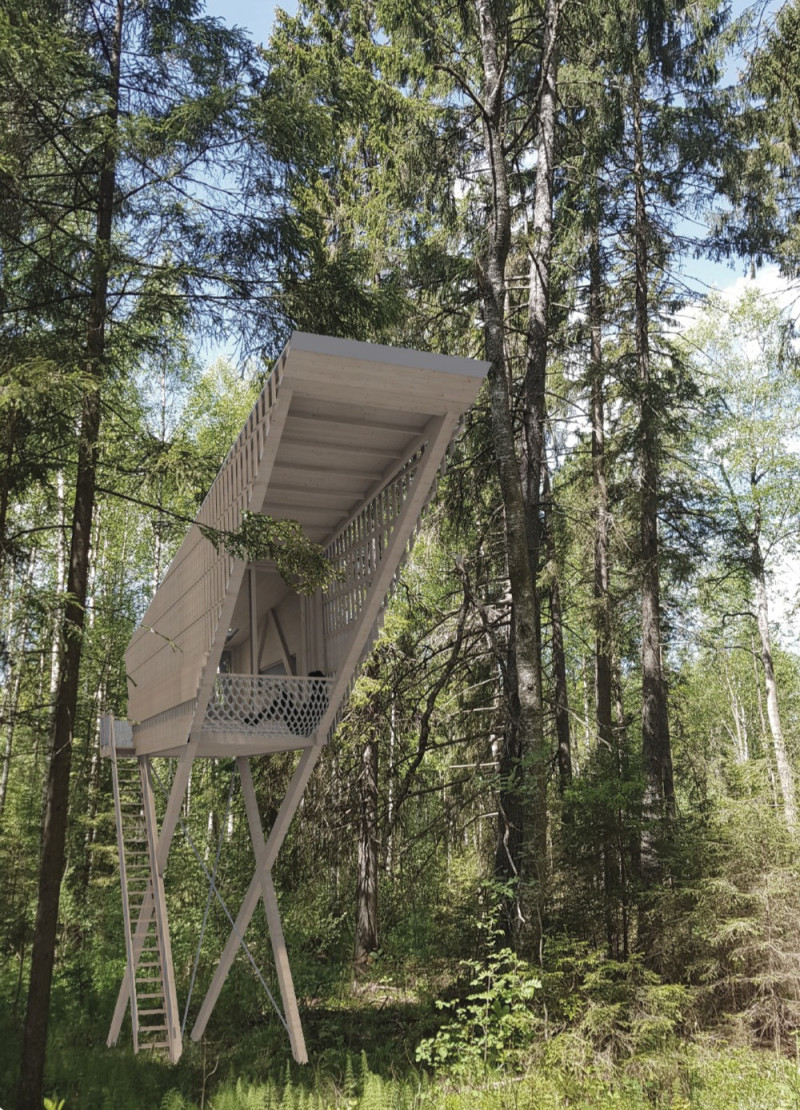5 key facts about this project
The KOKLE pavilion is located in Latvia and serves as a tribute to the country's rich musical tradition. Inspired by the kokle, a traditional string instrument, the pavilion emphasizes cultural significance while providing a space for reflection and meditation. The overall design seeks to foster a strong connection with nature and encourages visitors to immerse themselves in their surroundings.
Form and Spatial Organization
The pavilion features a unique trapezoidal shape, which creates a visual link between the building and the natural landscape. This geometry not only improves the visitor's view of the scenery but also promotes a feeling of openness. The layout allows for easy movement between the interior and the exterior, inviting a range of contemplative experiences that draw upon the beauty of the environment.
Materiality and Construction
Scots pine is the main material used in the construction of the KOKLE pavilion. This choice builds a connection to local craftsmanship, as Scots pine is traditionally used in making kokles. The structural system includes trusses and prefabricated elements, contributing to an efficient building process that does not compromise on durability.
Contextual Adaptability
Each module of the pavilion is designed to suit its specific surroundings, whether in the forest or by the lakeside. In the forest, elevated modules offer a sense of refuge, allowing for personal reflection in a secluded space. By contrast, units near the lake focus on interaction with the flowing water, enhancing the sensory experience and supporting meditation.
Natural Light and Aesthetics
The horizontal lathing creates a rhythm throughout the building, shaping the distribution of openings. This design choice optimizes natural light, resulting in shifting patterns of light and shadow in the interior spaces. The changing atmosphere encourages visitors to engage with the pavilion at different times of the day, enriching their overall experience.



























